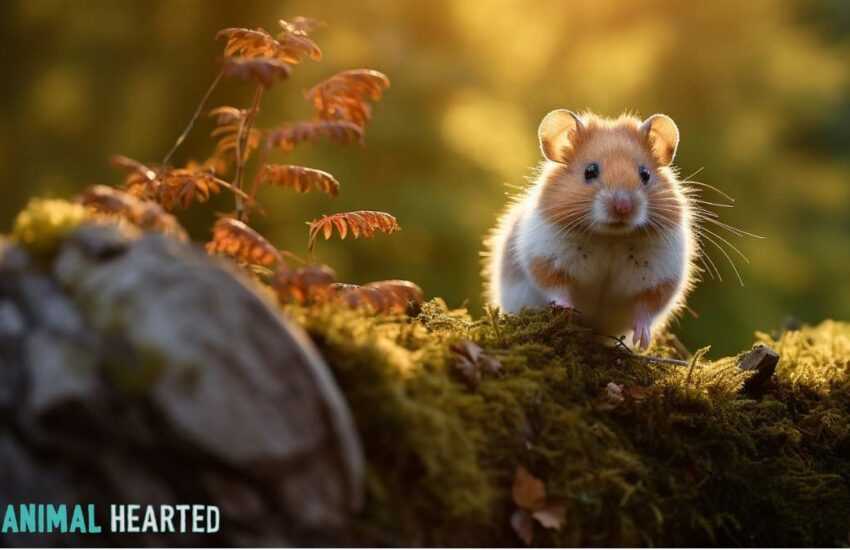Best Interactive Hamster Breeds for Kids
Hamsters are one of the most popular pets among families, especially those with children. Their small size, cute features, and relatively simple care requirements make them ideal companions. However, not all hamster breeds are created equal when it comes to their interactive nature. Some breeds are more playful, friendly, and social, making them better suited for children looking for an affectionate pet. In this article, we will explore the best interactive hamster breeds for kids, their characteristics, and why they might be a perfect fit for your family.
Before we delve into the specific breeds, let’s highlight some compelling reasons that make hamsters great pets for kids:
- Size: Hamsters are small and can easily be handled by young children.
- Low Maintenance: They don’t require extensive care compared to larger pets.
- Educational Experience: Owning a hamster can teach children responsibility and empathy.
- Playfulness: Many hamsters love to explore and play, making them entertaining companions.
In this article, you will discover which hamster breeds are the most interactive, how to care for them, and tips for keeping a hamster happy and healthy. Additionally, we will provide some important considerations for parents when introducing a pet to their children.
Why Choose Interactive Hamster Breeds?
When selecting a pet for children, choosing a breed that is known for its interactive personality can significantly enhance the pet experience. Interactive hamsters are usually more social, willing to engage, and demonstrate affectionate behaviors. This can foster a deep bond between the child and the hamster.
Characteristics of Interactive Hamsters
- Affectionate: They enjoy being handled and will show signs of affection towards their owners.
- Curious: Interactive hamsters often explore their environment and are less timid around humans.
- Playful: They love to play with toys, run on wheels, or engage in interactive games.
- Trainable: Some breeds can learn simple tricks or respond to their names, providing additional fun.
Top Interactive Hamster Breeds
1. Syrian Hamster
The Syrian hamster, also known as the golden hamster, is perhaps the most well-known breed. They are larger than most other hamsters, making them easier for children to handle. Syrians are generally friendly and can form a bond with their owners.
Key Features:
- Friendly and social
- Sized well for handling
- Require a spacious cage due to their size

2. Campbell’s Dwarf Hamster
Campbell’s dwarf hamsters are small, friendly creatures that are known for their playful personalities. They are generally quite social, especially when raised in pairs or small groups. Children will enjoy their energetic antics.
Key Features:
- Small and easy to handle
- Highly active and playful
- Can be kept in pairs with proper introductions
3. Roborovski Hamster
The Roborovski hamster is the smallest breed and is known for its fast movements and playful nature. They are less likely to be handled extensively than other breeds but are fun to watch as they scurry around their cages.
Key Features:
- Very small size
- Highly active and playful
- Less prone to being handled but fun to observe
4. Winter White Dwarf Hamster
Winter White hamsters are known for their gentle nature and unique color-changing fur. They enjoy interacting with their owners and can be relatively easy to handle when socialized from a young age.
Key Features:
- Gentle and friendly
- Can change color in winter
- Enjoys cage enrichment and interactions
How to Care for Your Interactive Hamster
Caring for a hamster requires attention, appropriate diet, and habitat needs. Here are some essential tips to keep your interactive hamster healthy and happy:
1. Proper Habitat
Your hamster’s cage should be spacious and enriched with toys that stimulate their natural behaviors, such as running, burrowing, and nesting. Make sure to clean their habitat regularly to keep them healthy.
2. Healthy Diet
Provide a balanced diet that includes commercial hamster pellets, fresh fruits, and vegetables. Avoid fatty treats and ensure that fresh water is always available.
3. Social Interaction
Spend time with your hamster daily. Engage them in play while ensuring they feel safe and comfortable. Gradual interactions can help build trust.
4. Affordable Enrichment
Buy or create toys that encourage exploration, such as tunnels, wheels, and chewable items. Rotating their toys can help keep their interest piqued.
Helping Your Kids Bond with Their Hamster
When introducing a hamster to younger children, it’s important to establish guidelines. Parents should supervise interactions and teach kids how to handle their new pet gently. This ensures that both the hamster and the child have a safe and enjoyable experience.
Tips for Supervised Interactions
- Teach children to approach the hamster calmly.
- Allow the hamster to come out of its cage on its own terms.
- Show children how to handle the hamster safely, supporting its body properly.
- Encourage gentle petting and soft speaking to comfort the hamster.
The Importance of Education
Owning a hamster can be an educational opportunity for kids. Parents can use the experience to teach kids about pet care, responsibility, and empathy for animals. Consider involving children in daily care routines to foster a sense of responsibility.
Conclusion
Interactive hamsters can be wonderful companions for kids, offering affection, playfulness, and learning opportunities. Syrian, Campbell’s dwarf, Roborovski, and Winter White hamsters stand out as excellent choices due to their social and friendly natures. By providing proper care and fostering a bond through gentle interactions, children can enjoy the joys of pet ownership. As you consider bringing one of these adorable creatures into your home, remember to choose a breed that aligns with your family’s lifestyle, ensuring a positive experience for both your child and their new furry friend.
If you want to dive deeper into hamster care, feel free to check out these resources: Hamster Care 101 and Choosing the Right Pet for Kids.
